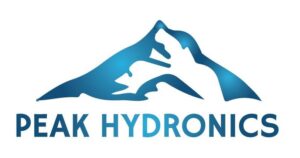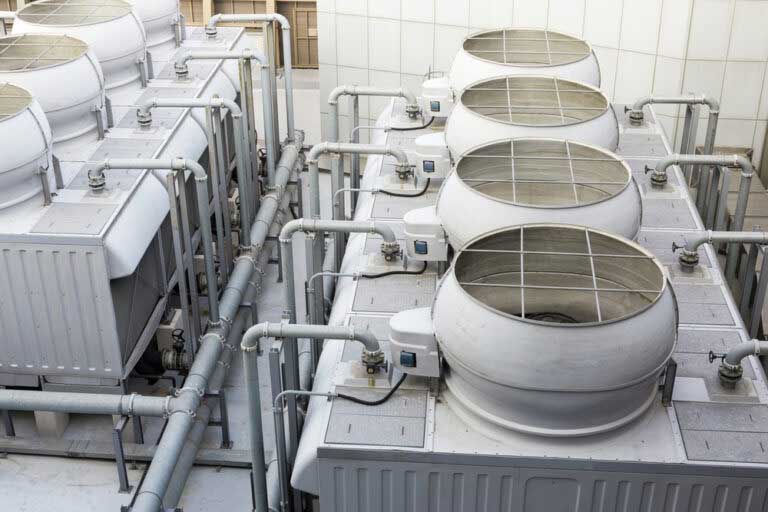Ever wonder how offices, schools and other commercial buildings stay cool while the temperatures outside begin to climb?
You’d think it’d be a simple matter of using an air conditioning unit but, for larger spaces, this isn’t always practical.
Instead, larger buildings rely on cooling towers to remove the heat by cooling a stream of water to a lower temperature using evaporation.
While cooling towers are often used in industries such as nuclear power and petroleum, they can be seen on the rooftops of many shopping centers, universities and hospitals.
So how do cooling towers work? Here is a breakdown on how a cooling tower inside an HVAC system can cool down even the largest of buildings:
How Cooling Towers Work
Cooling towers get rid of unwanted heat from chillers, a component of the HVAC system that operates on the basis of vapor compression.
When used within an HVAC system, the cooling tower is paired with the water-cooled chiller/condenser.
This works by providing a continuous flow of coolant to the cold side of a water system before being pumped through the process water system. This extracts heat from the building as it flows back to the return side of the process water system.
To do this, water is pumped to the top of the tower and moves down flow plates to the basin. Air then goes through the plates and over the water to release the heat through evaporation.
For tips on how to prepare your HVAC system for seasonal changes, check out this Seasonal Heating and Cooling Checklist.
Types of Cooling Towers
Cooling towers vary in size and design and are chosen for buildings based on its cooling load (which is determined by the size of the building), the relative humidity of the air and the location of the building.
Cooling tower design is based on heat transfer methods and air flow generation methods.
Here are examples of heat transfer methods:
-
- Dry cooling towers. These towers operate by transferring heat through a heat exchanger with extended fins. Dry cooling towers do not consume any water.
- Open circuit cooling towers. Also known as wet cooling towers, these popular towers are cost-effective and renewable since they reuse water to cool the facility.
- Closed circuit cooling towers. Closed circuit cooling towers, or fluid cooling towers, water is often mixed with glycol to form a fluid. The fluid circulates in a coil and is not directly exposed to air.
And examples of air flow generation methods:
- Natural draft. These towers use the design and shape of the tower to move airflow upward using fans. Natural draft towers are taller and tend to be located outside of the building.
- Mechanical draft. Mechanical draft towers use a fan to circulate air within the tower. They are smaller in structure and can be installed inside the building.
- Cross flow cooling towers. Cross flow cooling towers are designed to allow air to flow horizontally while the water flows vertically. More air is required to create heat transfer, so these systems tend to be less efficient.
- Counter flow cooling towers. These towers operate by having hot water enter from the top while air is introduced from the bottom and exits from the top. They are more efficient and easier to maintain than cross flow cooling towers.
If you are looking to have a cooling tower installed for your business or large building, your needs will determine which system will work best for you.
When you’re not sure which HVAC system will work best for your needs, or are looking to have your current system inspected and maintained, you can always contact our expert technicians at Peak Hydronics.
We are ready to help with all of your heating and cooling needs!

